Comprehensive Guide to Using Matplotlib.axis.Tick.get_path_effects() in Python
Matplotlib.axis.Tick.get_path_effects() in Python is a powerful method used in the Matplotlib library for retrieving the path effects applied to tick marks on plot axes. This function is an essential tool for data visualization enthusiasts and professionals who want to create stunning and informative plots. In this comprehensive guide, we’ll explore the ins and outs of Matplotlib.axis.Tick.get_path_effects(), providing detailed explanations and practical examples to help you master this feature.
Understanding Matplotlib.axis.Tick.get_path_effects() in Python
Matplotlib.axis.Tick.get_path_effects() in Python is a method that returns a list of path effects applied to a tick mark. Path effects are visual enhancements that can be added to various elements of a plot, including tick marks, to improve their appearance or visibility. These effects can include shadows, glows, strokes, and more.
To use Matplotlib.axis.Tick.get_path_effects() in Python effectively, it’s crucial to understand its syntax and functionality. Let’s start with a simple example:
import matplotlib.pyplot as plt
import matplotlib.patheffects as path_effects
fig, ax = plt.subplots()
ax.plot([0, 1], [0, 1], label='how2matplotlib.com')
tick = ax.xaxis.get_major_ticks()[0]
tick.label1.set_path_effects([path_effects.withStroke(linewidth=3, foreground='red')])
effects = tick.get_path_effects()
print(effects)
plt.show()
Output:
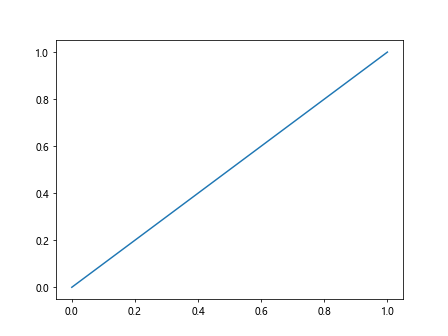
In this example, we create a simple plot and apply a stroke effect to the first major tick label on the x-axis. We then use Matplotlib.axis.Tick.get_path_effects() in Python to retrieve the applied effects and print them.
Exploring Different Path Effects with Matplotlib.axis.Tick.get_path_effects() in Python
Matplotlib.axis.Tick.get_path_effects() in Python can be used with various path effects. Let’s explore some common effects and how to apply them to tick marks:
Shadow Effect
import matplotlib.pyplot as plt
import matplotlib.patheffects as path_effects
fig, ax = plt.subplots()
ax.plot([0, 1], [0, 1], label='how2matplotlib.com')
tick = ax.xaxis.get_major_ticks()[0]
tick.label1.set_path_effects([path_effects.withSimplePatchShadow()])
effects = tick.get_path_effects()
print(effects)
plt.show()
Output:

This example demonstrates how to apply a shadow effect to a tick label and retrieve it using Matplotlib.axis.Tick.get_path_effects() in Python.
Glow Effect
import matplotlib.pyplot as plt
import matplotlib.patheffects as path_effects
fig, ax = plt.subplots()
ax.plot([0, 1], [0, 1], label='how2matplotlib.com')
tick = ax.xaxis.get_major_ticks()[0]
tick.label1.set_path_effects([path_effects.withSimplePatchShadow(offset=(0, 0), shadow_rgbFace='yellow', alpha=0.8)])
effects = tick.get_path_effects()
print(effects)
plt.show()
Output:

This example shows how to create a glow effect on a tick label using a yellow shadow with no offset.
Combining Multiple Path Effects with Matplotlib.axis.Tick.get_path_effects() in Python
Matplotlib.axis.Tick.get_path_effects() in Python can also be used to retrieve multiple path effects applied to a single tick mark. Let’s see how to combine effects:
import matplotlib.pyplot as plt
import matplotlib.patheffects as path_effects
fig, ax = plt.subplots()
ax.plot([0, 1], [0, 1], label='how2matplotlib.com')
tick = ax.xaxis.get_major_ticks()[0]
tick.label1.set_path_effects([
path_effects.withStroke(linewidth=3, foreground='red'),
path_effects.withSimplePatchShadow(offset=(2, -2), shadow_rgbFace='blue', alpha=0.5)
])
effects = tick.get_path_effects()
print(effects)
plt.show()
Output:
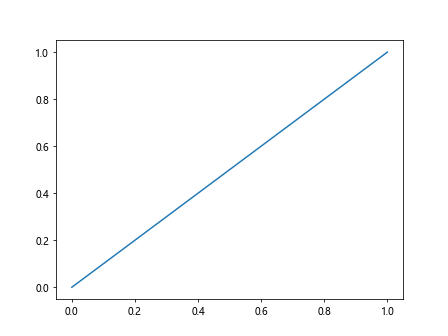
In this example, we apply both a stroke and a shadow effect to a tick label and use Matplotlib.axis.Tick.get_path_effects() in Python to retrieve the combined effects.
Customizing Tick Marks with Matplotlib.axis.Tick.get_path_effects() in Python
Matplotlib.axis.Tick.get_path_effects() in Python can be particularly useful when customizing tick marks. Let’s explore some advanced customization techniques:
Changing Tick Mark Color and Style
import matplotlib.pyplot as plt
import matplotlib.patheffects as path_effects
fig, ax = plt.subplots()
ax.plot([0, 1], [0, 1], label='how2matplotlib.com')
for tick in ax.xaxis.get_major_ticks():
tick.tick1line.set_path_effects([path_effects.Stroke(linewidth=3, foreground='green')])
tick.label1.set_path_effects([path_effects.withStroke(linewidth=2, foreground='red')])
effects = ax.xaxis.get_major_ticks()[0].get_path_effects()
print(effects)
plt.show()
Output:
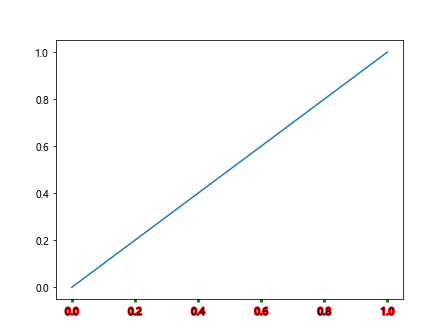
This example demonstrates how to change the color and style of tick marks and their labels using path effects.
Creating 3D-like Tick Marks
import matplotlib.pyplot as plt
import matplotlib.patheffects as path_effects
fig, ax = plt.subplots()
ax.plot([0, 1], [0, 1], label='how2matplotlib.com')
for tick in ax.xaxis.get_major_ticks():
tick.tick1line.set_path_effects([
path_effects.Stroke(linewidth=3, foreground='black'),
path_effects.Normal(),
path_effects.Stroke(linewidth=2, foreground='white')
])
effects = ax.xaxis.get_major_ticks()[0].get_path_effects()
print(effects)
plt.show()
Output:
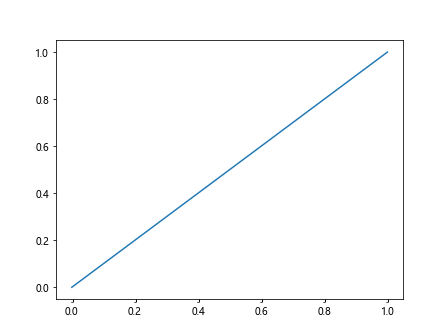
This example shows how to create 3D-like tick marks using multiple stroke effects.
Applying Path Effects to Different Axis Types with Matplotlib.axis.Tick.get_path_effects() in Python
Matplotlib.axis.Tick.get_path_effects() in Python can be used with various axis types. Let’s explore how to apply and retrieve path effects for different axis configurations:
Polar Axis
import matplotlib.pyplot as plt
import matplotlib.patheffects as path_effects
import numpy as np
fig, ax = plt.subplots(subplot_kw=dict(projection='polar'))
r = np.arange(0, 2, 0.01)
theta = 2 * np.pi * r
ax.plot(theta, r, label='how2matplotlib.com')
for tick in ax.xaxis.get_major_ticks():
tick.label1.set_path_effects([path_effects.withStroke(linewidth=2, foreground='red')])
effects = ax.xaxis.get_major_ticks()[0].get_path_effects()
print(effects)
plt.show()
Output:

This example demonstrates how to apply and retrieve path effects for tick labels in a polar plot.
Logarithmic Axis
import matplotlib.pyplot as plt
import matplotlib.patheffects as path_effects
import numpy as np
fig, ax = plt.subplots()
x = np.logspace(0, 5, 100)
ax.semilogx(x, np.sqrt(x), label='how2matplotlib.com')
for tick in ax.xaxis.get_major_ticks():
tick.label1.set_path_effects([path_effects.withSimplePatchShadow()])
effects = ax.xaxis.get_major_ticks()[0].get_path_effects()
print(effects)
plt.show()
Output:
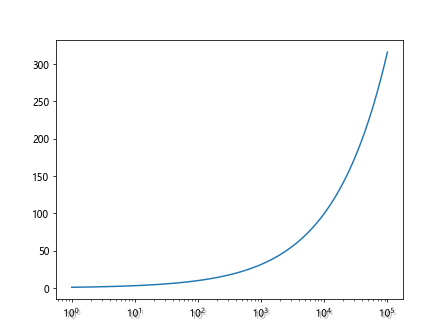
This example shows how to apply and retrieve path effects for tick labels on a logarithmic x-axis.
Advanced Techniques with Matplotlib.axis.Tick.get_path_effects() in Python
Let’s explore some advanced techniques using Matplotlib.axis.Tick.get_path_effects() in Python:
Dynamic Path Effects
import matplotlib.pyplot as plt
import matplotlib.patheffects as path_effects
import numpy as np
fig, ax = plt.subplots()
x = np.linspace(0, 10, 100)
ax.plot(x, np.sin(x), label='how2matplotlib.com')
for i, tick in enumerate(ax.xaxis.get_major_ticks()):
color = plt.cm.viridis(i / len(ax.xaxis.get_major_ticks()))
tick.label1.set_path_effects([path_effects.withStroke(linewidth=2, foreground=color)])
effects = ax.xaxis.get_major_ticks()[0].get_path_effects()
print(effects)
plt.show()
Output:
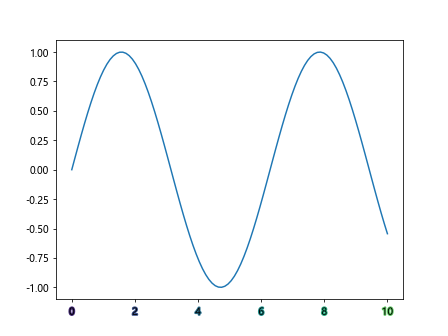
This example demonstrates how to apply dynamic path effects to tick labels based on their position.
Animated Path Effects
import matplotlib.pyplot as plt
import matplotlib.patheffects as path_effects
import matplotlib.animation as animation
import numpy as np
fig, ax = plt.subplots()
x = np.linspace(0, 10, 100)
line, = ax.plot(x, np.sin(x), label='how2matplotlib.com')
def animate(frame):
for tick in ax.xaxis.get_major_ticks():
color = plt.cm.viridis(frame / 100)
tick.label1.set_path_effects([path_effects.withStroke(linewidth=2, foreground=color)])
return line,
ani = animation.FuncAnimation(fig, animate, frames=100, interval=50, blit=True)
effects = ax.xaxis.get_major_ticks()[0].get_path_effects()
print(effects)
plt.show()
Output:

This example shows how to create animated path effects for tick labels.
Best Practices for Using Matplotlib.axis.Tick.get_path_effects() in Python
When working with Matplotlib.axis.Tick.get_path_effects() in Python, it’s important to follow some best practices to ensure your visualizations are effective and maintainable:
- Use consistent effects: Apply similar path effects across related elements to maintain visual coherence.
Don’t overuse effects: Too many path effects can make your plot cluttered and hard to read.
Consider color contrast: Ensure that the path effects you apply don’t reduce the readability of your tick labels.
Test on different backgrounds: Path effects may look different on various background colors, so test your plots on different themes.
Document your effects: When using complex path effects, document your choices to make it easier for others (or yourself) to understand and modify the code later.
Let’s see an example that demonstrates these best practices: